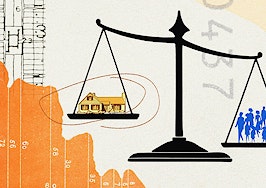- An Apartment List study says U.S. rents rose 64 percent between 1960 and 2014, while real household incomes increased by 18 percent.
- Incomes in Washington D.C., Boston and San Francisco jumped since 1980, but rents have increased twice as fast.
- Income fell by 10 percent in Houston during the span, even though rents continued to push forward.
- Sparked by a growing population, Austin rents rose steadily since 1980, but incomes kept up with the ascending flow.
Does it feel like more of the paycheck is going toward rent? For most metros, renters are spending more of relatively unchanged incomes, according to Apartment List.
Some of the most economically unbalanced cities for rent and income growth include Houston, Washington D.C., Boston and San Francisco, according to the website’s rent growth study.
By analyzing U.S. Census data from 1960 to 2014, the rental search and data website saw average U.S. rents rising 64 percent, while real household incomes increased by a mere 18 percent.
Back in 1960, the median U.S. rent was $568 per month. Hopefully, it’s not too difficult to swallow lease terms after seeing that figure.

Rents rose fastest during the ’60s (18 percent increase) and the ’80s (16 percent increase). The ’70s and ’90s saw modest rent hikes of 4 and 2 percent, respectively.
The only decade when income outpaced rent was the ’90s, when wages grew 10 percent.
From 2000 to 2010, incomes actually fell 7 percent, while rents continued to climb 12 percent higher. Thereafter, nationwide rent and income growth flattened overall.

The share of cost-burdened renters, or those spending over 30 percent of incomes on housing, has doubled since 1960 (24 percent) to reach almost 50 percent of all U.S. renters.
Which culprits on the coast are worse for renters?
Recently, San Francisco and New York City rent growth tapered slightly from its steadfast upward trend, but incomes haven’t had the opportunity to catch up just yet, according to the sudy.
While incomes in D.C., Boston and San Francisco jumped since 1980, rents have increased twice as fast. Renters may feel high incomes on the coasts offset the cost of living – and for high-earners, that may be the case – but historically, wages are slower. D.C. has seen a 33 percent rise in real household income, but a staggering 86 percent rise in rent.
In L.A., rents rose 55 percent while incomes fell short with an increase of just 13 percent.
Subpar income growth in the Midwest, South

Most of the major metros in the Midwest and South suffered stagnant or dropping incomes. Dallas and Chicago incomes barely moved since 1980, but rents rose 25 percent and higher. In Houston, income fell by 10 percent, but rents continued to push forward.
Orlando and Miami aren’t as bad off — both metros realized moderate income growth since 1960, but not enough to match or overtake the rent hike. Florida’s biggest markets saw a trend similar to the U.S. overall, with income increases around 15 to 25 percent but rent growth doubling that.
The under-represented balance
Only two cities saw paralleled growth between rent and income: Austin and Las Vegas.
Sparked by a growing population, Austin rents rose steadily since 1980, but incomes kept up with the ascending flow. A recent wave of newcomers led to a 40 percent rise in rent, but wage growth slightly surpassed the housing hike.
Las Vegas saw much less growth in both categories, but remained slightly above even since 1980, with around a 10 percent increase in both rent hikes and wage growth.













